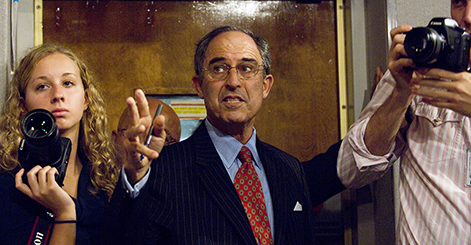Master Class in Crisis Management: Seven Tips
By Xenia Kobylarz | October 23, 2013 | News Articles

Lanny Davis (Photo by Scott J. Ferrell/Congressional Quarterly/Newscom)
Magazine feature: Seven tips from leading professionals in the area of crisis management. This is the accompanying article to the main feature "The Emerging Crisis Management Practice."
(VIEW THE FULL ARTICLE WITH SIDEBAR)
1. Understand your client’s business. Key to advising clients in this multidisciplinary practice is being able to address the full spectrum of a client’s business and how each issue intersects with the other, according to Michael Chertoff of Covington & Burling: “In a complicated crisis, you may have legal issues at the core, but you also have to think of the stakeholders, the health of the business and the general public. Sometimes lawyers are overly narrow and they only look at the problem to make it easier to represent the client in court.” He added that in some cases, winning the case might not be the best result for the client. “The collateral damage might be too much and your client’s business or reputation might not be able to sustain it,” he explained.
2. Get all the facts out and get ahead of the story. Rule #1 and Rule #3 in Lanny Davis’ “Five Rules of Crisis Management” promote the virtue of being proactive. Pitching a story before it breaks, Davis writes, allows you the luxury of “getting an entire story written,
all at once, with all good and bad facts summarized fairly and accurately.”
3. Humanize your client. Part of navigating out of the crisis is presenting a “genuine and authentic response to what’s happening,” advised Andrew Tulumello of Gibson, Dunn & Crutcher. “You’re not going to be able to humanize the situation or earn the trust of the public unless you take steps to go forward and really engage the media.”
4. Don’t ignore social media. “You can’t dismiss certain content because of the source,” Tom Becker of Sitrick And Company cautioned. That’s a mistake many people and businesses still make. “Social media is very powerful and we are pretty much to the point now that there’s almost no need to separate it from other media,” he said. Anyone, he added, can post anything at any time and can influence a large pool of people. A lot of people doing Google searches are not going to pay attention to the source of the information, whether it’s a blog or a tweet. “People only pay attention to content and content is out there and people are influencing other people,” Becker said.
5. Monitor what people are saying. Being vigilant to what other people are saying not only gives you a sense of how to maneuver your PR strategy, but also provides useful information. “Some of the information might actually be helpful if you’re investigating something or might show some of the legal challenges that might come your way,” Chertoff said.
6. Fight lies with truth. What happens if your client gets misrepresented on the Internet and everybody keeps repeating the same distortions a thousand times? Davis likens the experience to “being in the middle of a swarm of bees with honey on your hair.” And his advice is to “whack at them with the truth.” Use social media and post your side of the story on blogs and websites. Get the truth out there to help drown out the lies, Davis said. “Never give in, even though it is hopeless. Those who care about the issues will find your facts and truth.”
7. Develop a nose for news. Understanding what is likely going to gain traction in the press and what’s likely to interest people can help in developing your PR strategy. “Something might not be interesting to you or your client but it could be important to other people,” Becker said.

